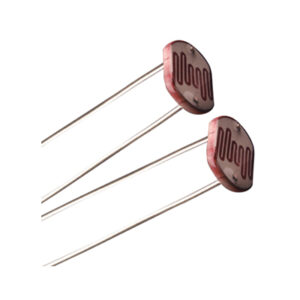The characteristics of a regular junction diode will show that it is designed primarily for operation in the forward direction. Forward biasing will cause a large Forward current (IF ) with a rather small value of Forward Voltage (VF ). Reverse biasing will generally not cause current conduction until higher values of reverse voltage are reached. If Reverse Voltage (VR ) is great enough, however, breakdown will occur and cause a reverse current flow. Junction diodes are usually damaged when this occurs. Special diodes like Zener diodes are designed, manufactured to operate in the reverse direction without being damaged.
Let us see the function of a Zener diode.
A Zener diode is a diode as shown in figure 1 which allows current to flow in one direction, i.e. forward direction in the same manner as an ideal diode, but also permits it to flow in the reverse direction when the voltage is above a certain value known as the “breakdown voltage”, “avalanche point”, or “peak inverse voltage”. And while that sounds a bit esoteric, they’re actually among the handiest components ever to cross an engineer’s bench, providing great solutions to a number of common needs in circuit design. Figure 1 also shows the pinout of a Zener diode.
Working Principle of a Zener Diode
There are two ways by which a Zener diode works and it could simply said that there are two effects that can be used in Zener diodes. One is called Zener breakdown, and the other, Impact or Avalanche Ionization. The two effects are totally different, although they produce almost identical effects. The Zener effect works mostly below 5.6 volts whereas Impact Ionization is the major effect above this voltage. Now we will see the function these two effects in detail:-
- Zener breakdown effect: Under most conditions electrons are contained within atoms in the crystal lattice. In this state they are in what is called the valence band. If a large electric field is placed across the semiconductor this may be sufficient to pull the electrons out the atom into what is called the conduction band. When they are free from the atom they are able to conduct electricity, and this gives rise to the name of the conduction band. For them to pass from the valence band into the conduction band there must be a certain force to pull them free. It is found that once a certain level of electric field is present a large number of electrons are pulled free creating allowing current to suddenly start to flow once a certain reverse voltage is reached.
- Impact Ionization: Impact Ionization is very different to Zener breakdown and it occurs when a high electric field is present in a semiconductor. Electrons are strongly attracted and move towards the positive potential. In view of the high electric field their velocity increases, and often these high energy electrons will collide with the semiconductor lattice.When this occurs a hole-electron pair is created. This newly created electron moves towards the positive voltage and is accelerated under the high electric field, and it may collide with the lattice. The hole, being positively charged moves in the opposite direction to the electron. If the field is sufficiently strong sufficient numbers of collisions occur so that an effect known as avalanche breakdown occurs. This happens only when a specific field is exceeded, i.e. when a certain reverse voltage is exceeded for that diode, making it conduct in the reverse direction for a given voltage, just what is required for a voltage reference diode.
Zener Diode as Voltage Regulator
The term Regulator means which regulates or controls. Zener diode can work as a voltage regulator if it is introduced in a circuit. The output across the diode will be constant. It is driven by a current source. As we know if the voltage across the diode exceeds a certain value it would draw excessive current from the supply. The basic diagram of Zener diode as Voltage Regulator is given below,
To limit the current through the Zener diode series resistance R is introduced whose value can be chosen from the following equation
Resistor value (ohms) = (V1 – V2) / (Zener current + load current)
The above diagram is of a Shunt Regulator because the regulating element is parallel to the load. The Zener diode produces a stable reference voltage across the load which fulfills the criteria of regulator.
Applications
Zener diodes are useful for creating a reference voltage or as a voltage stabilizer for low-current applications. These diodes are rated for 5.1 volts with a maximum of 1W. Zener diodes are also used in surge protectors to limit transient voltage spikes. Another notable application of the Zener diode is the use of noise caused by its avalanche breakdown in a random number generator. They can be used to limit voltages, preventing surges from damaging electronics circuits.
Thanks for reading the blog,
For more information about the product please visit: http://www.tenettech.com/category/381/diode
For more information about different products please visit: http://www.tenettech.com/category/1/products
For technical queries please drop an e-mail: info@tenettech.com









